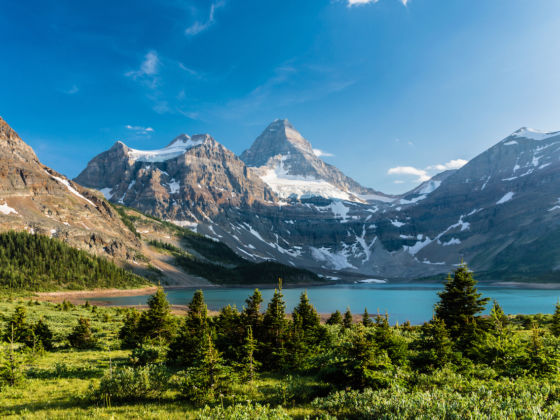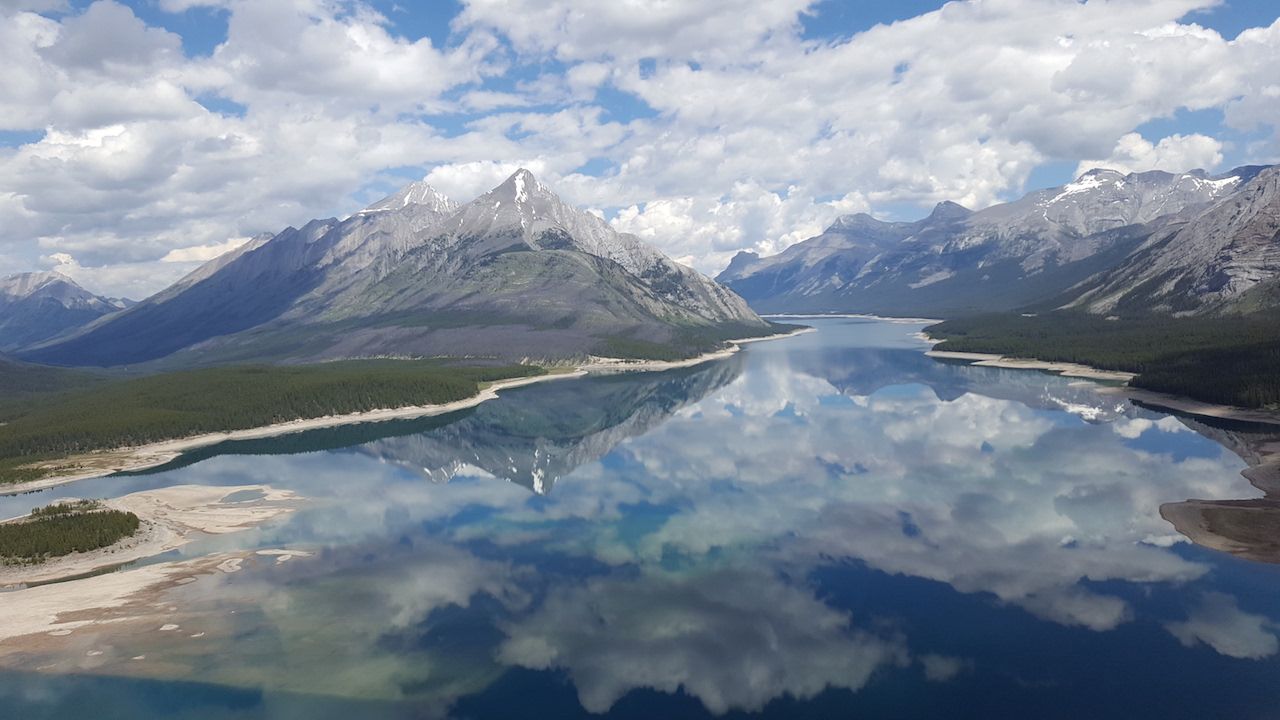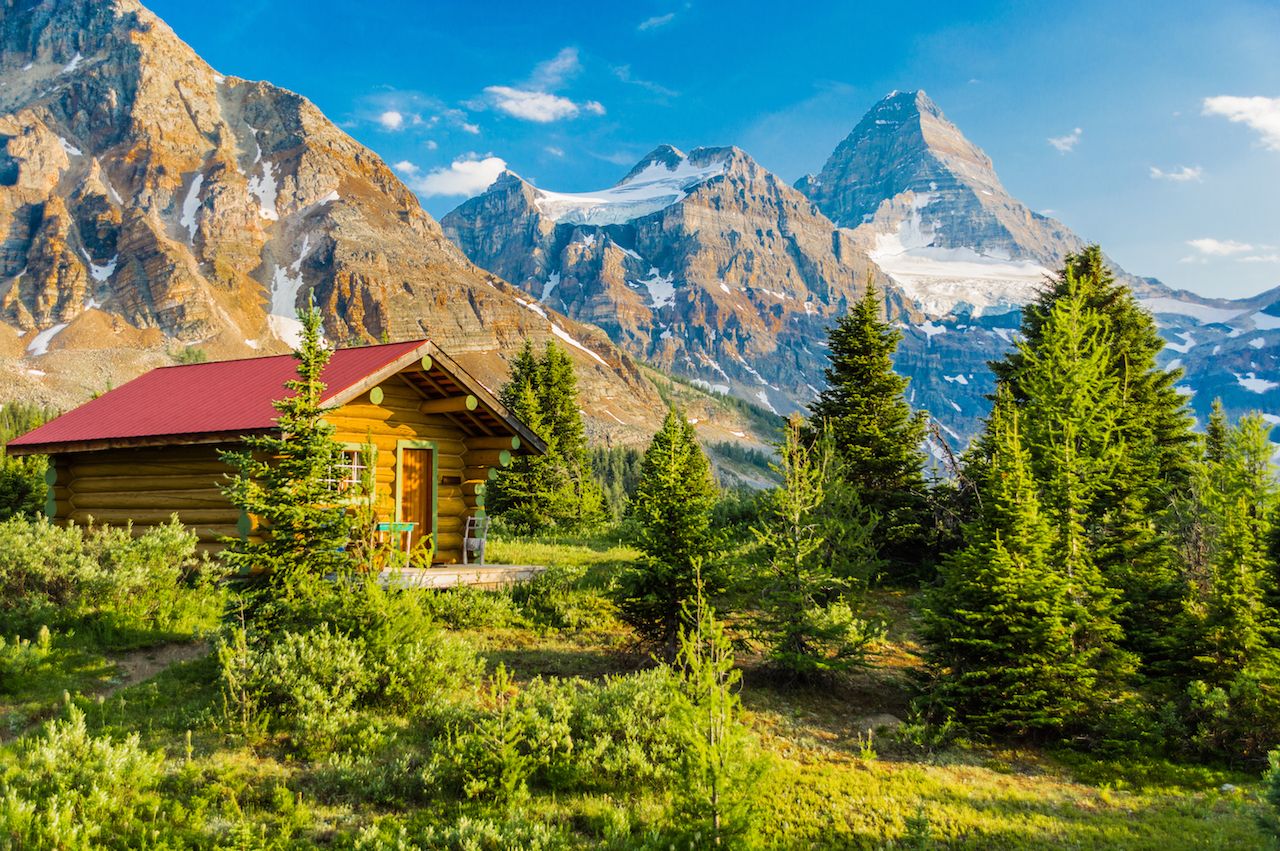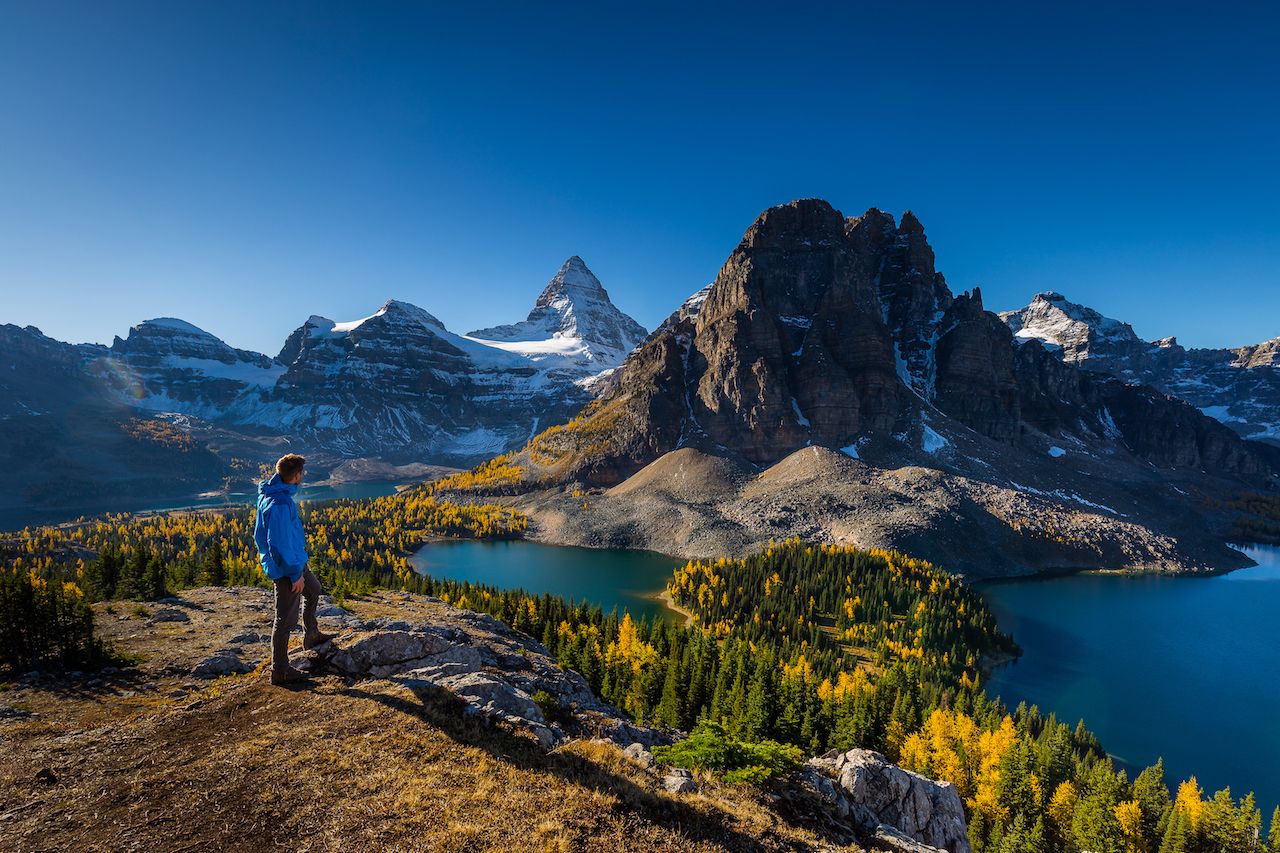Mount Assiniboine Provincial Park in British Columbia has everything the Canadian Rockies are famous for — including craggy mountain peaks and turquoise lakes — but without the crowds you get in a place like Banff National Park. With no roads in or out, the park is essentially undeveloped. Aside from an old backcountry lodge, a smattering of rustic log cabins, and a barebones campground, the only development you’ll find is a network of hiking trails connecting you to some of the most beautiful and pristine backcountry you can find anywhere.


This Stunning Park in Canada Has No Roads in or Out. You Need to Go Anyway.
Getting there

Photo: Dan Arnett
Without those roads, you have only two options to arrive at Mount Assiniboine Provincial Park: Hike in on one of the two main trails connecting the park to the outside world, or save your legs some hard work and helicopter in. When I visited in 2016 we were operating on a pretty narrow timetable, so we took the chopper in. It’s about $130-$150 one way, at current exchange rates, depending on which helipad you fly out of. While it’s obviously the more expensive choice, the whirlybird saves you a lot of time and also gives you some unforgettable views. Just hold your camera up to the window, point, and snap. You’ll get one of the best pictures you’ve ever taken.
Still, depending on your schedule and your budget, it might not be worth it to shell out upwards of $150 (CAD $200) just to get there. If you decide to hoof it in, you’ve got two main options. If you’re coming from the north, closer to Banff, you’ll park your car at Sunshine Village Ski and Snow Resort, then make the 18-mile journey south. While this is the longer hiking option, it’s also the easiest as there is very little elevation gain. For a shorter but more strenuous route, you’ll ditch the car at the Mount Shark trailhead 25 miles south of Canmore, and make the strenuous yet beautiful trek via Wonder Pass. It’s possible to do this all in one day, provided you get up early enough, but it’s easier to spend a night at the Bryant Creek shelter.
One more note of caution here: Although the aptly named Wonder Pass is a marvel to behold, it is also known for high levels of grizzly activity. In fact, the section between Bryant Creek and Mt. Assiniboine stays closed during August and September to limit human-bear interaction. Use standard grizzly precaution here: Hike in a group, announce your presence with some noise as you go, and make sure you’re carrying bear spray.
Where to stay

Photo: Benedikt Juerges/Shutterstock
The core of the park centers around Lake Magog, a stunning glacial lake that reflects the snow-capped cornice of Mt. Assiniboine. Within a couple kilometers of the lake are some backcountry campsites, a group of primitive cabins called the Naiset Huts, and the historic Assiniboine Lodge.
Should you choose to camp, you’ll need to make reservations far ahead of time. Backcountry camping is strictly regulated in order to preserve the wilderness, and while the park may be remote, the few campsites here are in high demand, especially in the summer months. While the sites themselves are spartan and fires are not allowed, there’s a handsome common area complete with a massive picnic shelter, bear lockers, running water, and grey water disposal. A sprawling network of trails connects the sites with the rest of the lodge area. While you’re never too far from the lodge, the lake, or trail access, you still have a sense of privacy and solitude in the woods.
If the backcountry camp sounds a bit too rough, you may want to check out the rustic Naiset Huts. Connected by a series of trails and boardwalks over the alpine meadows surrounding the lodge, each one-room log hut contains a wood-burning stove and can sleep five to eight people. While the Naiset Huts do not have kitchens, there is a communal kitchen building that all hut residents share. Staying in a hut is a great way to stay warm, feel a bit more secure, and enjoy a greater sense of community.
But if money is no object, then you owe it to yourself to stay at the Assiniboine Lodge. Built in 1928 and located 16 miles from the nearest road, the lodge is North America’s first backcountry ski lodge. Nearly a century later it still provides welcome comfort to adventurers who travel so far from civilization to explore this unspoiled wilderness. Each cozy bedroom has a private woodburning stove and can accommodate up to three people. All meals are included during your stay — including a packed lunch for your day trips — and guided hikes are complimentary. After a long day in the wilderness, return to the historic dining room for a three-course meal with a selection of wine and beer.
What to do

Photo: Pavel Tvrdy/Shutterstock
The most popular activity by far is hiking. With miles of pristine trails cutting through alpine forests, unrolling over flowered meadows, and hugging glacial lakes, the park is a hiker’s paradise. One of the longest hikes in the area takes you from the lodge past nearby Lake Og up to the heights of the aptly named Windy Ridge. Although the views are worth it, don’t underestimate the “slog from Og” as it is known; give this one a good chunk of your day.
A more casual stroll will take you to Cerulean Lake and Sunburst Lake, whose sapphire waters are hemmed in by pines and the towering peaks of the snow-capped Rockies. The park’s signature hike is what’s commonly referred to as “The Nub.” Don’t let its diminutive nickname fool you; this small, rocky perch offers the biggest views in the park, a panorama that is the stuff of photographers’ dreams.
If you’re like me, then it’s hard to look at all this water without wondering if there are some fish in there. While trout are not native to these lakes, they were indeed stocked in the early days of the lodge and can still be found in good numbers and healthy size today. And while the park is by no means an angling destination, you can still have some pretty decent luck even with modest equipment.
Right before our helicopter ride, I ran into a Canadian Tire (sort of like a Wal-Mart) and got a basic rod and reel plus some spoons all for about 30 bucks. Whichever lake you fish in, look for rocky features and cast about 30 to 45 feet from the bank with a slow retrieval to give your spoon some time to sink. I had my best luck at Cerulean Lake and Lake Magog. The best spot was right where a stream emptied into Lake Magog. Keep casting into that confluence and you’re sure to reel in a decent sized rainbow, brown, or cutthroat. Just make sure you’ve got a British Columbia fishing license. They’re available at the lodge.